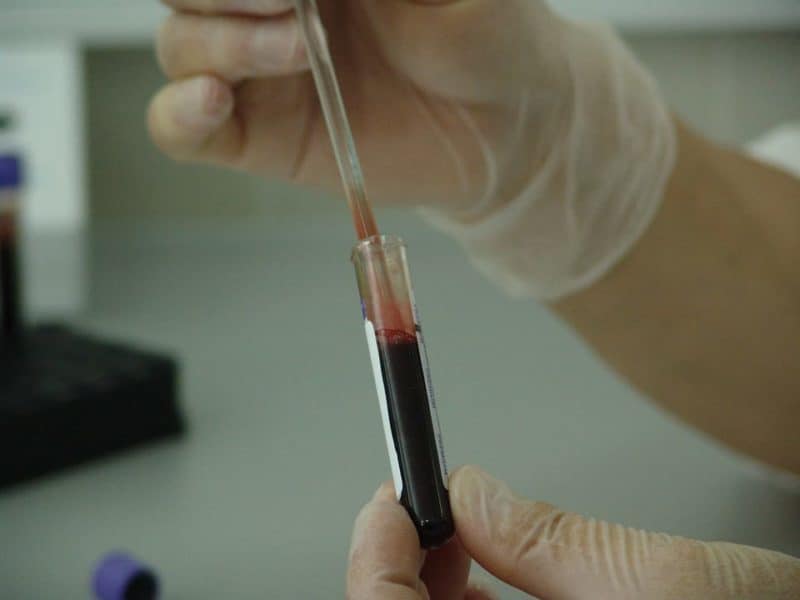A growing body of evidence suggests that traditional cancer treatments can paradoxically promote new tumor growth. Now, a team of scientists led by Dipak Panigrahy, MD, and Allison Gartung, PhD, of the Cancer Center at Beth Israel Deaconess Medical Center (BIDMC), has demonstrated that administration of anti-inflammatory treatments that prevent inflammation as well as proresolution treatments that tamp down the body’s inflammatory response to surgery or chemotherapy can promote long-term survival in experimental animal cancer models. The paper was published online in The Journal of Clinical Investigation and has been named the Editor’s Pick for the month of July.
“Cancer therapy is a double-edged sword, as dying cancer cells can trigger inflammation and promote the growth of microscopic cancerous cells,” said Panigrahy. “Surgery, chemotherapy and radiation can all induce the body’s inflammatory/immunosuppressive injury response. Even anesthetics can impair the resolution of inflammation.”
Panigrahy and colleagues, including Charles N. Serhan, PhD, DSc, director of the Center of Experimental Therapeutics and a member of the Department of Anesthesiology, Perioperative and Pain Medicine at Brigham and Women’s Hospital, hypothesized that an early blockade of the inflammatory cascade and/or accelerating the resolution of inflammation could overcome the tumor-promoting unintended consequences of cancer surgery. This novel approach of blocking inflammation and/or accelerating the resolution of inflammation before a surgical procedure could also potentially benefit the more than 30 percent of patients who do not have cancer but harbor microscopic cancers – small clusters of cancer cells that don’t produce a growing tumor. Physiologic stress, including from therapeutic procedures such as surgery and anesthesia, can prompt these microscopic cancers to grow into palpable tumors.
Using a well-established animal model, the scientists found that preoperative but not postoperative administration of a nonsteroidal anti-inflammatory drug called ketorolac eliminated the spread of cancer cells in multiple tumor-resection models, resulting in significantly prolonged survival. The team also showed that preoperative administration of resolvins – naturally occurring anti-inflammatory factors produced by the human body first discovered by Serhan and colleagues at Brigham and Women’s Hospital in 2002 – produced the same result. Moreover, they found that together, ketorolac and resolvins exhibited synergistic anti-tumor activity, preventing surgery or chemotherapy from converting dormant tumor cells into a growing tumor in animal models.
“Simultaneously blocking pro-inflammatory responses with ketorolac and activating endogenous resolution programs via resolvins may represent a novel approach for preventing systemic recurrence in the context of locoregional disease,” said Gartung. “Clinical trials are now urgently needed to validate these animal studies,” she added.
This novel approach of blocking inflammation and/or accelerating the resolution of inflammation before a surgical procedure may also benefit the more than 30 percent of patients who do not have cancer but harbor microscopic cancers – small clusters of cancer cells that don’t produce a growing tumor. Physiologic stress, including from therapeutic procedures such as surgery and anesthesia, can prompt these microscopic cancers to grow into palpable tumors.
“Collectively, our findings suggest a paradigm shift in clinical approaches to cancers and non-cancer surgery protocols,” Gartung said.
Co-authors included Haixia Yang, Molly M. Gilligan, Megan L. Sulciner, Jaimie Chang, Julia Piwowarski, Anna Fishbein, Dulce Soler-Ferran, Swati S. Bhasin, and Manoj Bhasin of BIDMC; Jun Yang and Bruce D. Hammock of the UC Davis Comprehensive Cancer Center at University of California, Davis; Diane R. Bielenberg, Birgitta A. Schmidt, and Steven J. Staffa of Boston Children’s Hospital; Matthew A. Sparks of Duke University and Durham VA Medical Centers; Vidula Sukhatme from GlobalCures Inc.; Mark W. Kieran of Dana-Farber Cancer Institute; Sui Huang from the Institute for Systems Biology; and Vikas P. Sukhatme of Emory University School of Medicine.
The research was supported by grants from the National Cancer Institute (RO1 01CA170549, ROCA148633 and RO1GM038765); Beth Israel Deaconess Medical Center seed funds; the Credit Unions Kids at Heart Team; C.J. Buckley Pediatric Brain Tumor Fund; the Kamen Foundation; the Joe Andruzzi Foundation; National Institute of Environmental Health Science Superfund Research Program grant P42 ES004699; National Institute of Environmental Health Science grant RO1 ES002710; the Sheth family; Stop and Shop Pediatric Brain Tumor Fund; Molly’s Magic Wand for Pediatric Brain Tumors; the Markoff Foundation Art-In-Giving Foundation; and Jared Branfman Sunflowers for Life.


